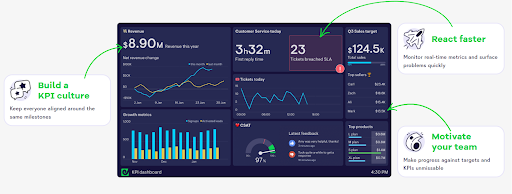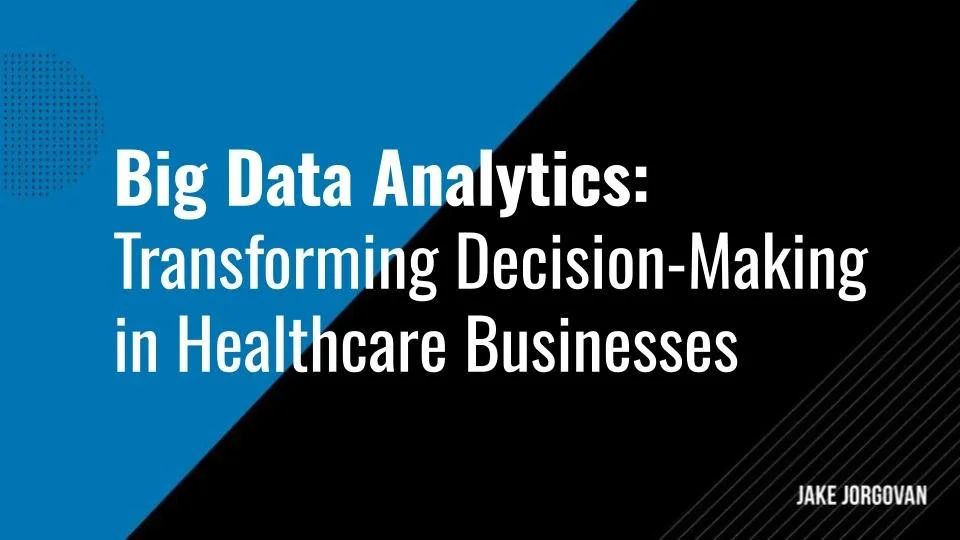How to Leverage Data Management and Analytics Consulting to Gain a Competitive Advantage
Businesses that harness data effectively gain a clear edge over competitors. Businesses that harness data effectively gain a clear edge over competitors, and this is something the best understand — the big data consulting market is predicted to hit USD 36,751.2 million by 2030, according to IndustryARC.
Data management and analytics consulting help you transform raw data into valuable insights and make informed decisions.
That means you can make smarter, faster decisions by streamlining data processes and unlocking hidden patterns.
And you’re on the right page for that.
This article explores how leveraging professional data services can enhance efficiency, optimize strategies, and drive growth.
Let’s dive in.
What Is Data Management and Analytics Consulting?
Data management and analytics consulting focuses on optimizing how organizations handle, analyze, and use their data. It involves strategic guidance, technical expertise, and process improvement to ensure data is accurate, accessible, and valuable for decision-making.
Data management includes organizing, storing, and maintaining data throughout its lifecycle.
Consultants evaluate an organization’s existing data infrastructure, identify inefficiencies, and propose solutions. Key areas include data governance, which sets policies for data use; data quality management, which ensures accuracy and consistency; and data integration, which combines disparate data sources into a unified framework.
“81% of companies agree that data should be at the center of business decision-making.” - Ernst & Young
Analytics consulting involves helping organizations extract insights from their data.
Consultants design and implement analytical frameworks to meet specific business objectives. Services often include developing dashboards, predictive modeling, and implementing advanced analytics tools like machine learning and artificial intelligence. These solutions provide actionable insights for operational efficiency, market analysis, and customer behavior prediction.
The consulting process typically starts with an assessment of an organization’s data maturity. This identifies gaps in technology, skills, and processes. Consultants then recommend tailored strategies and technologies to address these gaps. They often assist with the adoption of cloud-based platforms, big data architectures, or real-time analytics systems.
Remember: Effective data management and analytics consulting requires domain expertise, technical proficiency, and a strong understanding of business needs. The goal is to enable organizations to leverage their data assets for competitive advantage, compliance, and innovation.
Advantages of Data Management and Analytics Consulting
Data management and analytics consulting provides organizations with specialized knowledge to harness their data for improved performance. In fact, data-driven companies outperform their competitors by 6% in profitability and 5% in productivity.
Below are more of the key advantages of leveraging these services.
Enhanced Decision-Making
Data management and analytics consulting enable organizations to make informed decisions. By providing access to clean, structured data and actionable insights, consultants help businesses predict trends and identify opportunities. This reduces guesswork and improves strategic outcomes.
Improved Data Quality
Consultants focus on data accuracy, consistency, and integrity. They implement robust data governance frameworks and validation processes. This ensures that organizations rely on trustworthy data for critical operations.
Cost Optimization
Effective data management reduces redundancies and inefficiencies. Analytics consulting identifies areas for cost savings by streamlining processes and optimizing resource allocation. Businesses that leverage big data trends often see a 10% decrease in overall costs.
Scalability and Flexibility
Consulting helps businesses design scalable data systems. These systems accommodate growth while maintaining performance. Flexible frameworks adapt to changing market conditions or organizational priorities without significant disruptions.
Regulatory Compliance
Data management consulting ensures adherence to legal and regulatory requirements. Experts help organizations implement policies and safeguards to protect sensitive information. This minimizes risks of penalties and data breaches.
Competitive Advantage
Analytics consulting uncovers hidden patterns in data. This gives organizations an edge in understanding customer behavior, market dynamics, and operational performance. A data-driven approach positions businesses ahead of competitors. Data-driven companies are 58% more likely to beat revenue goals than those who are not focused on data.
5 Strategies for Leveraging Data Management and Analytics Consulting
Leveraging data management and analytics is great for your company, but only if you do it correctly. Here’s what to focus on to get started.
1) Optimize Operational Efficiency Through Data-Driven Process Improvements
Improving your organization’s efficiency begins with clear, data-driven strategies.
When processes are optimized, operational delays decrease, and resources are better utilized. The result is a leaner, more agile business that can adapt quickly to market demands and internal changes. To make this happen, follow these steps:
Analyze Existing Processes
Start by mapping out each workflow. Identify bottlenecks, redundancies, and resource-intensive tasks. Collect and analyze data to understand where improvements can be made. This gives you a clear view of what slows down your operations.
There are many tools to help you here. Axify is great for engineering teams, for example, but you can find other project management tools for other types of projects.
Miro also offers tons of free templates you can leverage to enhance your workflow.
Implement Data Monitoring Tools
Invest in advanced data monitoring and management solutions, such as Geckoboard. Geckoboard is a live KPI tracking dashboard that allows businesses to design their own visual dashboards for a range of metrics with a drag-and-drop interface.
It integrates with popular software such as Google Analytics, Salesforce, and Shopify, pulling data directly from these programs to create visualizations of important metrics. You can make informed adjustments quickly and efficiently with accurate data while reducing downtime.
Automate Repetitive Tasks
Use automation to handle recurring, time-consuming processes. This cuts down manual effort, minimizes human error, and ensures consistency. Automation should align with your broader data strategy, enhancing rather than complicating your workflows.
Integrate Data Across Systems
Data silos limit your ability to optimize processes. Consolidate data from various departments into a unified system. This creates a seamless flow of information, improving collaboration and enabling faster decision-making.
As a side note, if you’re interested in streamlining collaboration across your departments, the video below will give you 5 good tips:
Regularly Audit And Refine Processes
Periodic audits are crucial. Monitor how well the optimized processes are performing against the set KPIs. Adjust and refine them as needed, using the data collected to guide your updates.
Insider Tip: We advise developing a predictive maintenance system for critical equipment. By analyzing performance data and trends, you can anticipate issues before they cause disruptions.
Implementing predictive maintenance can significantly improve operational efficiency. According to BCG, companies that have scaled with predictive maintenance have reduced unplanned downtime by 20% - 40% and decreased the total cost of ownership by 10%.
“Once you begin collecting and analyzing data, you’re likely to find that it’s easier to reach a confident decision about virtually any business challenge, whether you’re deciding to launch or discontinue a product, adjust your marketing message, branch into a new market, or something else entirely.” — Harvard Business School
2) Improve Customer Insights For Better Targeting And Personalized Marketing
Understanding your customers and potential customers deeply gives you an edge. When you align your business objectives with insights into customer behavior and customer preferences, you can craft personalized experiences that resonate.
Implementing personalized marketing strategies can lead to substantial improvements in customer engagement and conversion rates. For example, ShopExpress was able to increase open rates by 35% and boost conversion rates by 62% compared to non-personalized campaigns.
To achieve this, begin by gathering data from various touchpoints, including online interactions, purchase history, and social media behavior. Use a CRM system that integrates this information into your business operations. This gives you a holistic view of each customer, allowing for precise segmentation of your product offerings.
After that, create detailed customer segments based on behaviors, preferences, and demographic data. Each segment should represent a distinct group with specific needs. This proactive approach ensures your marketing efforts are targeted, not generalized, which maximizes their effectiveness.
Here are some good tips to get started practically:
Pro tip: Predictive analytics can be a powerful tool here to forecast future customer behavior. Identify which segments are most likely to respond to specific campaigns to anticipate needs and tailor your outreach accordingly. Such strategic approaches not only save time but also improve campaign efficiency.
In addition, you’ll want to develop personalized campaigns for each segment. Tailor messaging, product offerings, and recommendations to match the data-driven insights you've gathered. Personalization increases the likelihood of capturing your audience’s attention and drives better user experiences and results.
Finally, remember to track how each segment interacts with your campaigns. Use key metrics such as click-through rates, conversion rates, and customer lifetime value. This data tells you what's working and where adjustments are needed for continuous improvement, ensuring alignment with both customer needs and business objectives.
3) Identify New Market Opportunities By Analyzing Industry Trends And Consumer Behavior
Staying ahead in the market means recognizing opportunities before your competitors do. Analyzing industry trends and customer behaviors gives you deeper insights that reveal untapped markets.
This data-driven approach allows you to innovate, expand strategically, and build long-term growth. In fact, companies that leverage data-driven strategies are 23 times more likely to acquire customers and 19 times more likely to be profitable.
Follow these steps to identify new market opportunities:
Step One: Conduct market trend analysis: Use data analytics to study shifts in industry trends, customer demands, and emerging technologies. Focus on identifying patterns that indicate growth areas. This helps you anticipate the market and adjust your strategy accordingly.
Step Two: Monitor competitor activities: Analyze your competitors’ movements, including product launches, marketing campaigns, and expansion efforts. Track what works for them and where they fall short. This allows you to spot gaps in the market you can exploit.
SEMrush is a great tool for uncovering your competitors’ SEO and advertising strategies. We’re using it, too, but here’s an expert’s advice on how to do it:
Step Three: Study customer behavior: Analyze customer feedback, purchasing patterns, and interaction data. Identify unmet needs or emerging preferences that your competitors may overlook. Addressing these needs gives you a direct path to capturing new market segments.
Step Three: Leverage geospatial data: Use location-based data to understand where demand for your product or service is highest. Analyze regional trends to identify potential markets for expansion. This approach ensures your entry strategy is data-backed, reducing risk.
Pro tip: For a straightforward approach, start with Tableau or Power BI if you're already familiar with them, as they offer a user-friendly interface for geospatial analysis. If you need more detailed spatial insights, GIS tools like ArcGIS or QGIS are excellent choices. For advanced customization, explore Python with GeoPandas or Folium.
Step Four: Explore adjacent markets: Identify related sectors that share similarities with your current offerings. Consider how your existing capabilities can be adapted to meet needs in these adjacent markets. This strategy allows you to expand without overextending your resources.
4) Improve Product Development With Predictive Analytics And Customer Feedback Data
Developing products that resonate with your audience requires more than intuition. A data-driven approach streamlines the process, reducing guesswork and enhancing precision. Leveraging predictive models and customer feedback allows you to create products that align closely with market demands, boosting customer engagement.
Adopting a data-driven approach in product development significantly improves alignment with market demands and customer expectations. For example, companies that use data-driven strategies are 6 times more likely to retain customers.
To refine your product development strategy, a good first step is to use analytical tools to analyze historical data and current market trends. These insights help predict future demands and identify which features or products are gaining traction. This ensures your efforts focus on what is most likely to succeed, minimizing the risk of resource misallocation.
Collecting feedback through surveys, reviews, and direct user interactions is another critical step. Focus on identifying common pain points and feature requests to gain a deeper understanding of customer preferences and needs. Analyzing this data provides actionable insights, ensuring that new product features address real customer expectations.
Once you have a solid data pool, develop prototypes based on these insights and test them in controlled environments. Use A/B testing and performance metrics to evaluate variations and gather measurable results. Iteration based on real-time data analytics refines your product, ensuring it meets customer standards before launch.
After the launch, implement proactive measures to track product performance. Real-time monitoring of how customers interact with new features allows you to quickly identify issues and make adjustments, maintaining relevance and usability. Collaboration between data analysts, product developers, and marketing teams accelerates development and ensures alignment across efforts.
Finally, create a dedicated feedback loop system for beta users. Offering early access in exchange for detailed feedback provides meaningful insights and helps resolve issues before a full-scale launch. This data-driven approach enhances product quality and fosters customer engagement from the beginning.
5) Strengthen Data-Driven Decision-Making Across All Levels Of The Organization
Strong, informed decision-making relies on accurate, real-time data. When data informs every level of your organization, decisions become sharper, quicker, and aligned with broader strategic goals. This improves outcomes and cultivates a culture where insights drive actions.
Research indicates that companies emphasizing data-driven decision-making achieve 5-6% higher output and productivity than what would be expected given their other investments and information technology usage.
Here’s how to build a data-driven decision-making framework:
Establish a centralized data system: Create a unified platform that consolidates data from multiple sources. This ensures consistency and accuracy across the organization. A centralized system allows teams to access relevant data without delays, enhancing their ability to act swiftly.
Define key performance indicators (KPIs): Set clear, measurable KPIs that align with your strategic objectives. These metrics should guide decisions and provide a benchmark to measure success. Well-defined KPIs create focus and ensure that efforts across departments are coordinated.
Promote data literacy across teams: Equip teams with the skills to interpret and analyze data effectively. Regular training sessions should be conducted to deepen their understanding of how to use data in their decision-making processes. This reduces reliance on data specialists and empowers every team to make informed choices.
Utilize real-time analytics: Implement analytics tools that provide real-time insights, allowing teams to instantly monitor performance and adjust strategies. Real-time data ensures decisions are based on the most current information, reducing the risk of outdated insights influencing actions.
Encourage collaborative decision-making: Create processes that facilitate cross-departmental collaboration on data analysis. Encourage teams to share insights and findings. This breaks down silos and allows for more comprehensive decision-making based on diverse perspectives.
Common Mistakes and How to Avoid Them
Data management and analytics consulting can be a complex business. Many businesses run into the same mistakes here, which can set back their projects and prevent them from reaching their goals. Here are some common mistakes and potential issues and what you should do to avoid them.
Underestimating Data Quality Issues
Many companies dive into analytics without first addressing data quality. Inconsistent, incomplete, or outdated data can skew insights and lead to poor decisions. This oversight often results from assuming that all collected data is usable without proper validation. To avoid this, prioritize a data cleansing process and implement robust data governance frameworks to ensure accuracy and consistency.
Ignoring Scalability Needs
Organizations often fail to anticipate future data growth and system demands when setting up analytics solutions. Using tools or infrastructure that cannot scale with increasing data volumes limits the potential of analytics in the long term. To address this, invest in scalable cloud-based solutions or platforms designed to accommodate evolving business needs.
Focusing Solely on Tools Instead of Strategy
A common mistake is prioritizing the adoption of tools over developing a clear data strategy. While tools are essential, they are only as effective as the overarching strategy guiding their use. Companies should start with a defined set of business objectives and KPIs and bring in tools and technologies to support these goals.
Poor Change Management Practices
Analytics consulting often introduces new workflows and technologies, yet many companies neglect change management. 70% of change initiatives fail, often due to inadequate management support and employee resistance. To prevent this, make sure employees are involved early in the process and provide hands-on training to encourage adoption.
Lack of Integration Across Departments
Siloed departments and disconnected systems limit the value of analytics. When teams don’t share data or insights, companies miss out on the holistic view needed for strategic decisions. To avoid this, build a culture of collaboration and invest in systems that allow cross-functional data sharing.
Best Practices in Data Management and Analytics Consulting
One of the most important practices when it comes to data management and analytics consulting is to start with a comprehensive understanding of business goals and align them with the analytics strategy.
Many organizations approach data initiatives with a technology-first mindset, but focusing on outcomes ensures that the tools, processes, and insights generated serve a meaningful purpose. This alignment creates a foundation for actionable analytics that directly supports business growth.
Another critical practice is building a robust data infrastructure. Investing in scalable, secure, and flexible systems ensures that data can be efficiently collected, stored, and processed without bottlenecks.
“Every year, poor data quality costs organizations an average of $12.9 million.” - Gartner
Organizations should adopt cloud-based platforms or hybrid solutions to manage growing data volumes while maintaining accessibility for real-time analysis. A well-designed infrastructure allows organizations to future-proof their analytics capabilities and adapt as business demands change.
Organizations should also create a culture of data literacy so all employees across all levels understand how to interpret and use analytics to make data-driven decisions.
This involves regular training, encouraging collaboration between technical and non-technical teams, and integrating data into everyday workflows. A strong data culture improves decision-making and maximizes the return on investment in data management and analytics consulting.
Top Data Management and Analytics Consulting Tools
Let’s check out a few useful tools and software platforms out there to help you get more out of your data management and analytics consulting efforts.
1. Tableau
Tableau is a leading data visualization tool that enables users to create interactive and shareable dashboards. It connects to various data sources, simplifying complex data into understandable visuals. Consultants use Tableau to help clients gain insights and make data-driven decisions.
2. Microsoft Power BI
Power BI is a business analytics service by Microsoft that provides interactive visualizations and business intelligence capabilities. It allows users to create reports and dashboards, integrating seamlessly with other Microsoft services. Consultants leverage Power BI to deliver comprehensive analytics solutions.
3. Alteryx
Alteryx is a self-service data analytics platform that specializes in data preparation and blending. It allows users to organize, clean, and analyze data in a repeatable workflow, making it particularly useful for business analysts.
4. IBM Cognos Analytics
IBM Cognos Analytics is a web-based integrated business intelligence suite that provides tools for reporting, analytics, scorecarding, and monitoring of events and metrics. It offers a range of components designed to meet different information requirements within a company.
Stay Competitive with Data Management and Analytics Consulting
Data is perhaps the most valuable asset your company has access to. But you have to know how to use it — effective data management and analytics consulting transforms raw information into actionable insights.
Businesses that master these services gain a competitive edge by making smarter, faster decisions and using data to streamline business processes and uncover new opportunities.
In a world where insights define success, companies that harness their data properly will lead the way.
Frequently asked questions
How do you leverage data and analytics?
By collecting, organizing, and analyzing data, businesses can uncover future trends, optimize processes, and make informed decisions that drive growth and efficiency.
How can data analysis provide a competitive advantage?
Data analysis helps businesses identify opportunities, mitigate risks, and personalize customer experiences so they can outperform competitors with strategic insights.
What are the strategic pillars of a modern data strategy?
A modern data strategy is built on data governance, infrastructure scalability, advanced analytics capabilities, and fostering a data-driven culture.
How can data analytics improve business performance?
Data analytics allows businesses to streamline operations, reduce costs, and make smarter decisions by providing actionable insights based on real-time and historical data.
Which industries need data analysts the most?
Industries such as healthcare, financial institutions, retail, manufacturing, and technology heavily rely on data analysts to improve efficiency and drive innovation.
















